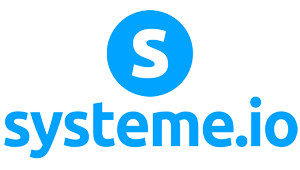Businesses are staring down a whole new era as voice assistants and AI tools like ChatGPT start weaving into our daily routines. Bing Places, believe it or not, is right at the center of this shift because it connects local business data directly with search engines and those AI-driven results we keep hearing about.
To optimize for ChatGPT and voice search, a business needs its Bing Places profile to be spot-on—accurate, complete, and tuned to how people actually talk when they search.

AI search is all about structured data and crystal-clear business info. If your hours, services, and locations are consistent across Bing Places, search engines and AI tools can fire back answers faster and with more confidence.
That means better visibility, not just in regular search results but also in those conversational AI replies you get from bots or voice assistants.
Optimizing for these platforms? It’s not just about ticking boxes on a listing. You’ll need some technical SEO, structured content, and a willingness to adapt as AI keeps changing the rules.
If you get how Bing Places feeds into AI search, you’ll have a real shot at staying visible while voice and chat-based queries keep picking up steam.
Understanding Bing Places, AI Search, and ChatGPT

Bing Places basically acts as a bridge between local businesses and search engines by offering up structured data that AI systems can actually understand. Meanwhile, ChatGPT is shaking things up by giving conversational answers instead of just a pile of links.
This shift is forcing digital marketing to juggle both classic SEO and this new breed of AI-powered search.
How Bing Places Integrates with AI Search
Bing Places lets businesses drop in details like address, phone number, hours, and services. All that structured info gets funneled straight into Microsoft Bing’s index, making it a breeze for AI to fetch accurate results.
So, when someone asks their voice assistant or an AI-powered search tool for, say, a nearby dentist, the system often leans on Bing Places data. A search like “Find a dentist near me” can pull up verified listings, maps, and even directions.
AI search engines love verified profiles because they’re less likely to be outdated or just plain wrong. Bing Places isn’t just a directory anymore—it’s a key data source for AI-driven answers.
Keeping your profile current can boost your visibility on both traditional search engines and newer platforms like SearchGPT. When your data is consistent everywhere, AI systems are way more likely to serve up reliable, context-aware answers.
The Role of ChatGPT in Modern Search
ChatGPT is changing the game by offering up chatty, conversational responses instead of those endless blue links. People phrase questions in natural language, and ChatGPT tries to understand what they’re really after to give direct, structured answers.
Unlike old-school search engines, ChatGPT can pull from a bunch of sources in real time. That means users don’t have to wade through a sea of results to get what they want.
Content needs to be clear and to the point if you want to get picked up by AI-powered search. Pages answering common questions in plain English are more likely to be referenced.
ChatGPT also works with voice search, so if your answers are short and easy to say out loud, you’ve got a better shot at being featured.
Differences Between Traditional SEO and AI-Powered Search
Traditional SEO is all about ranking pages using keywords, backlinks, and on-page tweaks. Your success kind of depends on how well your site matches up with Google or Bing’s ranking factors.
AI-powered search, like ChatGPT and SearchGPT, zooms in on intent and context. Instead of just ranking pages, these systems whip up summaries or answer questions directly, pulling info from trusted sources.
It’s less about keyword stuffing and more about structured data, schema markup, and having content that’s actually useful. Your info needs to be machine-readable if you want to stay in the game.
Here’s a quick look at how things stack up:
| Aspect | Traditional SEO | AI-Powered Search (ChatGPT, SearchGPT) |
|---|---|---|
| Focus | Keywords, backlinks, ranking factors | Context, intent, structured data |
| Output | List of ranked web pages | Direct answers, summaries |
| User Interaction | Clicking links, browsing sites | Conversational queries, voice search |
| Optimization Approach | On-page SEO, link building | Schema, verified data, clear content |
Optimizing for Bing Places to Enhance AI and Voice Search Visibility

If you’re aiming for better visibility in AI-driven search and voice queries, you’ll need accurate listings, solid local SEO, and some way to measure engagement. Bing Places is your anchor here—it keeps info correct and accessible across Microsoft’s whole ecosystem and AI-powered results.
Claiming and Verifying Your Bing Places Listing
First things first: claim and verify your business listing on Bing Places. That way, you’re in control, and you don’t risk random or duplicate info showing up in search.
Verification can happen by phone, email, or even postcard, depending on your business. Make sure your business name, address, phone, and website line up with what’s on other directories. Mismatched data? Search engines don’t love that.
Add categories, business hours, and service areas—these details help AI and voice assistants return spot-on answers. Uploading photos and logos makes your listing more recognizable and engaging.
A verified, complete profile? That’s your ticket to showing up in voice search results.
Optimizing Local SEO for Bing and AI Results
Local SEO for Bing isn’t just about your website. You’ll want to use structured data markup (like schema for hours and addresses) so AI search engines can make sense of your info.
Consistency is still king—your NAP data (Name, Address, Phone) should match up everywhere, from Bing Places to Google Business Profile and Yelp. That’s how you build trust.
Reviews matter, too. Ask customers for feedback and respond when they leave reviews. It shows you care and can give you a bump in both Bing search and AI-generated answers.
For voice search, target those conversational queries. Words like “nearest” or “open now” often trigger voice-based results, so make sure your business hours and service areas are clear.
Leveraging User Engagement Metrics for Better Rankings
Search engines look at user engagement metrics like click-through rates, bounce rates, and time on site to judge your relevance. A well-optimized Bing Places profile helps funnel users to the right info fast.
Calls-to-action like “Call Now” or “Get Directions” get people interacting. Updated photos, menus, or service details keep visitors from bouncing away.
Check your engagement data in Bing Webmaster Tools to see what’s working. Tweak your listing based on what you learn.
If people are clicking and sticking around, you’re more likely to rise in both traditional and voice-based search.
Technical SEO Strategies for AI and Voice Search
AI-driven search and voice assistants need structured info, quick-loading pages, and secure connections. Nailing the technical stuff makes it easier for search engines to index and surface your content, no matter the platform.
Structured Data and Schema Markup Best Practices
Structured data helps search engines get the gist of your site, not just the words. With schema markup, you can spell out business hours, product availability, and reviews in a way that Bing, Google, and AI interfaces can pick up.
A few things to keep in mind:
- Use the right schema type (
LocalBusiness,Product,FAQ, etc.). - Validate your markup with tools like Bing Webmaster Tools or Google’s Rich Results Test.
- Make sure your markup matches what’s actually on the page.
For voice search, schema markup boosts your odds of being the spoken answer. Marking up FAQs with FAQPage schema, for example, can help you show up in conversational queries.
Keep your markup fresh. Outdated or wrong structured data can hurt your chances of getting featured.
Enhancing Crawlability with Robots.txt and Sitemaps
Search engines need to crawl your site efficiently. A well-set robots.txt file tells bots what to index and what to skip. Blocking unnecessary stuff (like parameter-heavy pages or staging sites) helps save crawl budget.
A solid XML sitemap highlights your priority URLs, includes canonical pages, update times, and skips broken links. Submit your sitemap through Bing Webmaster Tools to check indexing and spot errors.
Internal linking matters, too. Logical, consistent links help search engines discover new content faster. For AI and voice search, making high-value content crawlable is key to showing up in those conversational answers.
Improving Site Performance and Security
Speed matters—a lot. Fast-loading pages keep users happy and search engines on your side. Compress images, use caching, and cut down on heavy JavaScript where you can.
Security’s non-negotiable. Use HTTPS for encrypted connections; search engines favor it, and users trust it. Make sure your certificates are valid and set up right so you don’t trigger browser warnings.
Monitor performance with Bing Webmaster Tools or PageSpeed Insights. Regular checkups let you catch slow assets or security hiccups before they hurt your rankings.
A speedy, secure site builds trust and gives you a better shot at being recommended in AI and voice search results.
Content Optimization for ChatGPT and Conversational AI
If you want to win with AI-driven search, you’ve got to write for how people actually talk—not just how they type. Clear, structured content that anticipates real questions helps conversational systems deliver better answers.
Writing for Natural Language and Voice Queries
When folks use voice assistants or ChatGPT, they lean into natural language queries. You’ll hear “What’s the best way to update my Bing Places listing?” instead of “Bing Places update.”
Stick to plain language that mirrors real conversations. Short sentences, active voice, and everyday words make your content easier for AI to process.
Formatting helps, too. Lists or snappy paragraphs make it more likely that AI tools will pull your info cleanly.
Don’t forget meta descriptions—write them in a way that sounds natural, not robotic, to boost your odds in both search and AI results.
Targeting Long-Tail Keywords and User Intent
Long-tail keywords catch those specific, conversational questions people actually ask. Instead of just “AI search,” try “how to optimize Bing Places for voice search.”
Figure out user intent—are they looking for info, instructions, or maybe a comparison? Content that nails these needs is more likely to get picked up by AI.
Here’s a quick way to group long-tail keywords:
| Intent Type | Example Query |
|---|---|
| Informational | “What is Bing Places?” |
| Navigational | “How to log in to Bing Places dashboard” |
| Transactional | “Best Bing Places optimization services near me” |
That way, you cover a bunch of user needs without repeating yourself.
Utilizing How-To and FAQ Schema
How-to schema and FAQ schema send strong signals to conversational AI—“Hey, here’s a direct answer!” For example, marking up “Claiming a Bing Places profile” with how-to schema lets AI tools break it down step by step.
FAQs are still gold because they line up with how people really ask questions. Short, clear answers under FAQ schema make you more likely to show up in chatty AI responses.
Make sure each FAQ uses plain language and ditches the jargon. Phrase questions like “How do I verify my business on Bing Places?” instead of cramming in keywords.
Mixing how-to schema with FAQs gives you structured, digestible content that works for both AI search and voice assistants.
Measuring Success and Advanced AI SEO Tactics
To really know if your efforts are paying off, you’ll want to track results, build up your authority, and use AI-powered tools to tweak your strategy. Keep an eye on your visibility in AI-powered search, strengthen your brand signals, and stay flexible as you learn what works.
Tracking Performance in AI-Driven SERPs
Measuring visibility in AI-driven SERPs? It’s a bit trickier than just following old-school keyword rankings.
Tools like Google Search Console, SEMrush, and Google Keyword Planner track impressions, click-through rates, and query-level performance. These numbers shed light on how well your content matches up with conversational and long-tail queries that pop up in AI results.
Engagement data—think time on page, bounce rate, or even scroll depth—shows if users are actually getting what they came for. Toss in interactive stuff like quizzes, calculators, or maybe a lively forum, and you might just keep folks hanging around longer.
It’s also worth peeking at how you’re doing in AI mode results from places like Perplexity or Gemini. If your content gets mentions or citations there, you’re probably doing something right in the conversational search world.
Building Domain Authority and Brand Signals
Domain authority isn’t built overnight. It comes from steady publishing, smart internal linking, and snagging external references from reputable sites.
Linking your pages together in a thoughtful way deepens your site’s topical strength and helps with indexation, whether it’s Bing or Google crawling around.
Search engines—and let’s be honest, AI systems too—care about brand signals like direct searches for your company, loyal repeat visitors, and chatter about you across the internet.
Jumping into forums or industry conversations can spark natural references that boost your credibility.
Don’t forget about structured data markup and showing off clear author info. Those little touches help build trust and make your site stand out as a go-to for voice search or chatty queries.
Leveraging AI Tools for Continuous Optimization
AI tools take a lot of the guesswork out of optimization. They dig into performance patterns and toss out recommendations that are actually useful.
Platforms like SEMrush and Google Search Console? They’re great for surfacing what’s dragging down your pages. Meanwhile, tools like Perplexity and Gemini can spot new query trends before they’re obvious to everyone else.
Content teams get a boost from AI-driven editors. These editors help smooth out readability, flag missing info, and nudge phrasing to sound more like, well, actual humans.
That’s especially handy for showing up in voice search or those AI-powered summaries that keep popping up everywhere.
Throw in some interactive stuff—quizzes, calculators, you name it—and you’ll get real feedback on what’s clicking with users.
Mixing analytics with AI-backed tips lets teams keep tweaking and improving, staying in step with whatever Google (or users) decide to care about next.



